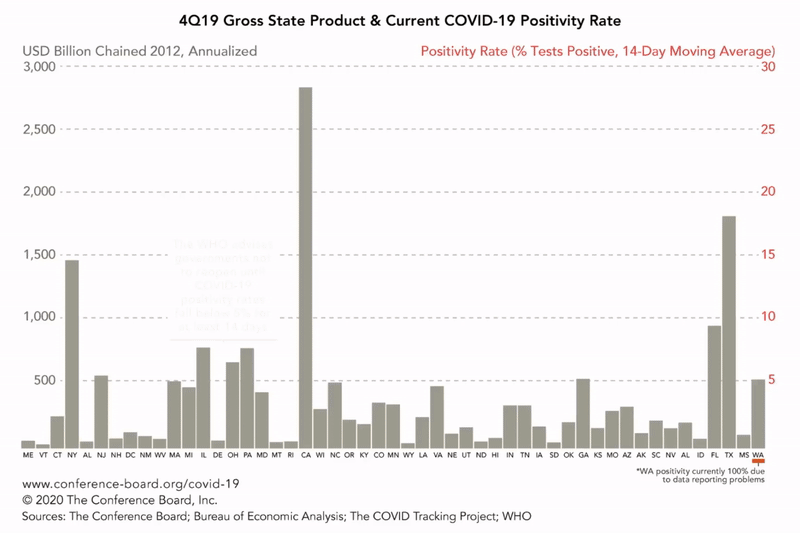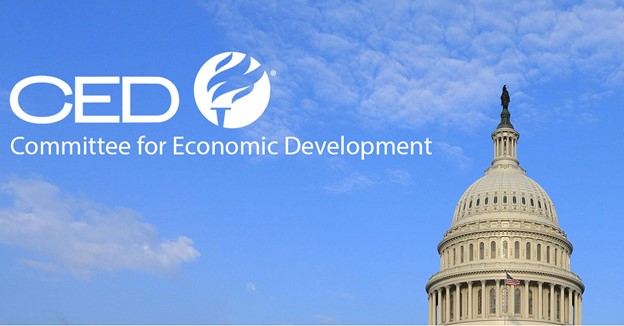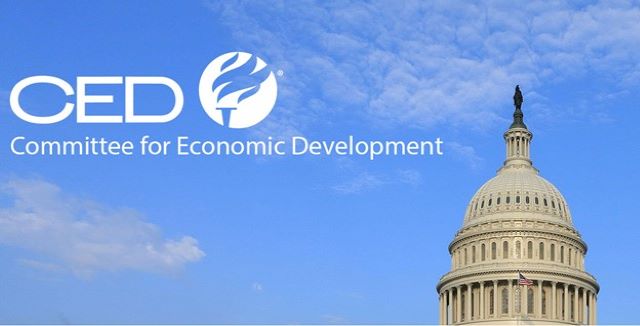
August 13, 2020 | Chart

While each individual state in the US is fighting its own battle against COVID-19, the economy of the entire nation is at risk. That said, varied testing capacity, policy guidance, and social distancing criteria make it difficult to know how large this risk really is. The World Health Organization (WHO) has provided some helpful guidance to leaders around the world, however. According to the WHO, a government should resist the urge to reopen if COVID-19 positivity rates (the share of COVID-19 tests that come back positive) exceed 5% over a 14-day period. While positivity rates in each US state are subject to sample bias related to the state’s testing policies, the data are still a useful benchmark. By juxtaposing these rates against each state’s economic output (we use 4Q19 Gross State Product), a clearer picture of how much of the US economy is exposed to the virus and potential lockdowns emerges. Only 14 states in the US currently meet the WHO’s 5% criterion. The remaining 36 states (75% of US GDP) are grappling with positivity rates above 5%, and 13 of those (29% of US GDP) are registering positivity rates of 10% or higher—twice the WHO’s cutoff. While these numbers appear to have been improving in recent weeks, policymakers and business leaders should monitor them closely as they work to balance the public health risks with the risk to the US economy.

July 27, 2022 | Newsletters & Alerts

May 11, 2022 | Newsletters & Alerts
